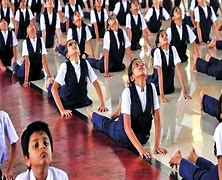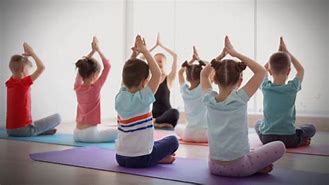Yoga is more than just physical exercise; it is a practice that nurtures the body, mind, and soul. For students, starting yoga can be a game-changer. It not only improves physical health but also sharpens focus, reduces stress, and enhances emotional balance. But beginning yoga the right way is crucial to fully enjoy its benefits. In this blog, we will explore how students of all ages can start yoga correctly, without feeling overwhelmed.

Understand Why You Want to Start Yoga
Before stepping onto the mat, it’s important to know your reason for practicing yoga. As a student, you might be looking for better concentration during studies, relief from exam stress, or just a healthier lifestyle. Defining your goal will help you choose the right yoga style and stay motivated. Yoga is a personal journey, and understanding your purpose will make your practice more meaningful and long-lasting.
Start with Simple Yoga Poses
Many students make the mistake of jumping into complex yoga poses they see online. This can lead to injuries and frustration. Instead, start with basic poses that build strength and flexibility gently. Simple asanas like Tadasana (Mountain Pose), Balasana (Child’s Pose), and Bhujangasana (Cobra Pose) are excellent for beginners. These poses are easy to learn and prepare the body for more advanced movements later. Remember, yoga is not about rushing; it’s about progressing at your own pace.
Find a Good Teacher or Online Class
Guidance is very important when starting yoga. A certified yoga teacher can correct your posture, suggest modifications based on your body type, and ensure you are practicing safely. If finding a teacher nearby is difficult, you can opt for online classes. However, make sure the instructor is well-qualified. Many platforms like Yoga With Adriene, DoYogaWithMe, and even free YouTube channels offer beginner-friendly yoga sessions that students can follow easily.
Create a Consistent Routine
Yoga shows the best results when it becomes a regular habit. As a student, your schedule may already be packed with studies and other activities, but even 15-20 minutes a day can bring noticeable changes. Pick a time that fits well into your day—early morning or just before bedtime are usually good options. A consistent routine will not only improve physical health but also bring mental clarity, which is essential for academic success.
Focus on Breathwork and Meditation Too
Yoga is not just about physical poses (asanas); it also includes pranayama (breathing exercises) and dhyana (meditation). These practices are especially helpful for students dealing with anxiety and pressure. Simple breathing techniques like Anulom Vilom (alternate nostril breathing) and Bhramari (humming bee breath) calm the nervous system and improve focus. Even spending five minutes in silent meditation daily can make a huge difference in emotional stability and study efficiency.
Practice Mindfulness on and off the Mat
Yoga teaches mindfulness, which means being fully present in whatever you are doing. When you practice mindfulness on the mat—by paying attention to your breath, your body, and your thoughts—you train your brain to be mindful in daily life too. This skill can be very helpful during lectures, exams, or even casual conversations. Mindful students are more attentive, retain information better, and handle stress with greater ease.
Listen to Your Body
One of the key principles of yoga is Ahimsa, or non-violence, which also applies to how you treat your own body. As a beginner, it is common to feel eager to master difficult poses quickly. However, forcing your body into a posture it’s not ready for can cause injuries. Always listen to your body. If a pose feels painful, ease out of it. It’s better to grow slowly and steadily than to rush and harm yourself.
Choose Comfortable Clothing and a Good Yoga Mat
Comfort plays a big role in how enjoyable your yoga practice will be. Wear light, stretchable clothes that allow free movement. Avoid very tight or very loose clothing, as they can distract you during practice. Investing in a good-quality, non-slip yoga mat is also important, especially for beginners. A good mat provides cushioning for your joints and helps maintain stability during poses.
Stay Hydrated and Eat Light Before Practice
Yoga is best practised on an empty stomach or at least 2-3 hours after a meal. Practising yoga with a heavy stomach can cause discomfort and lethargy. Drink water throughout the day to stay hydrated but avoid drinking large amounts immediately before or during practice. If you feel hungry before your yoga session, have a light snack like a banana or a handful of nuts.
Be Patient and Enjoy the Process
One of the most important tips for students starting yoga is to be patient. Progress in yoga is not always linear. Some days you may feel flexible and energetic, while other days you might struggle with simple poses. This is normal. Celebrate small victories, and don’t be too hard on yourself. Enjoy the journey of getting to know your body and mind better. Over time, yoga will become a natural and rewarding part of your life.
Conclusion
Starting yoga as a student is one of the best decisions you can make for your overall well-being. By beginning slowly, seeking proper guidance, focusing on mindfulness, and maintaining consistency, you set yourself up for a lifetime of health and inner peace. Yoga is not about achieving the perfect pose but about creating balance in your body and mind. Begin your yoga journey today—with patience, with awareness, and with joy.
The Best to Make a Positive First Impression
References:
- Yoga Alliance. (n.d.). Beginner’s Guide to Yoga. Retrieved from www.yogaalliance.org
- Harvard Medical School. (2020). Yoga for Better Mental Health. Retrieved from www.health.harvard.edu
- International Journal of Yoga. (2011). Yoga for Students: How it Enhances Mental and Physical Wellbeing.
- Yoga With Adriene. (n.d.). Free Online Yoga Classes for Beginners. Retrieved from www.youtube.com/user/yogawithadriene

